
Contingent Recruitment: A Comprehensive Guide for Agencies
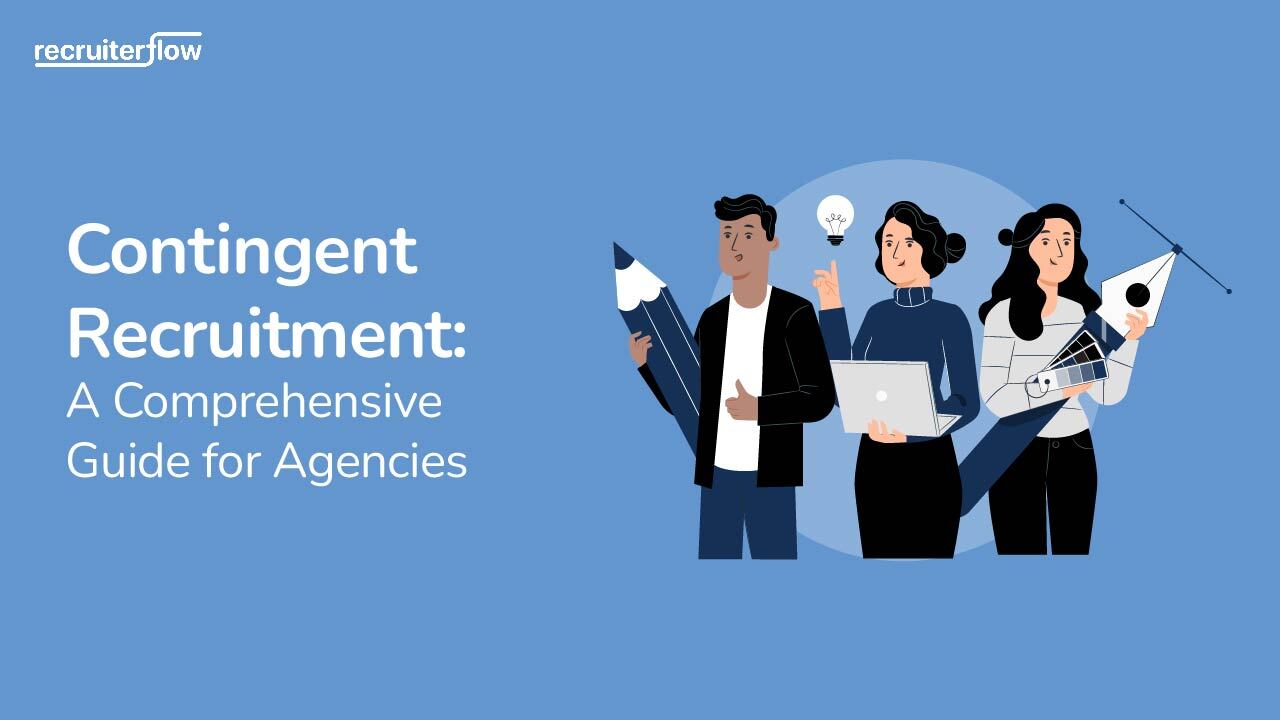
There’s a steady increase in demand for contingent recruiting, with almost 50% of agency owners preferring it as their primary recruitment model in 2024.
Are you someone still finding your way around the basics like, ‘What is contingent recruitment?’ Or have doubts backed with genuine concerns like– which is better contingency or retained?
In this blog, our objective is to dive deep into such questions and help you get a clear (and complete) picture of the contingency recruiting business model. So, let’s jump to it.
What is the contingent recruitment business model?
The contingent recruitment business model is often called “no win, no fee” recruitment, as the agency does not get paid unless they make a placement. The commission that agencies receive vary depending on the industry but is roughly 25-30% of the candidate’s annual salary.
How Contingent Recruitment Works
The process typically involves several key steps:
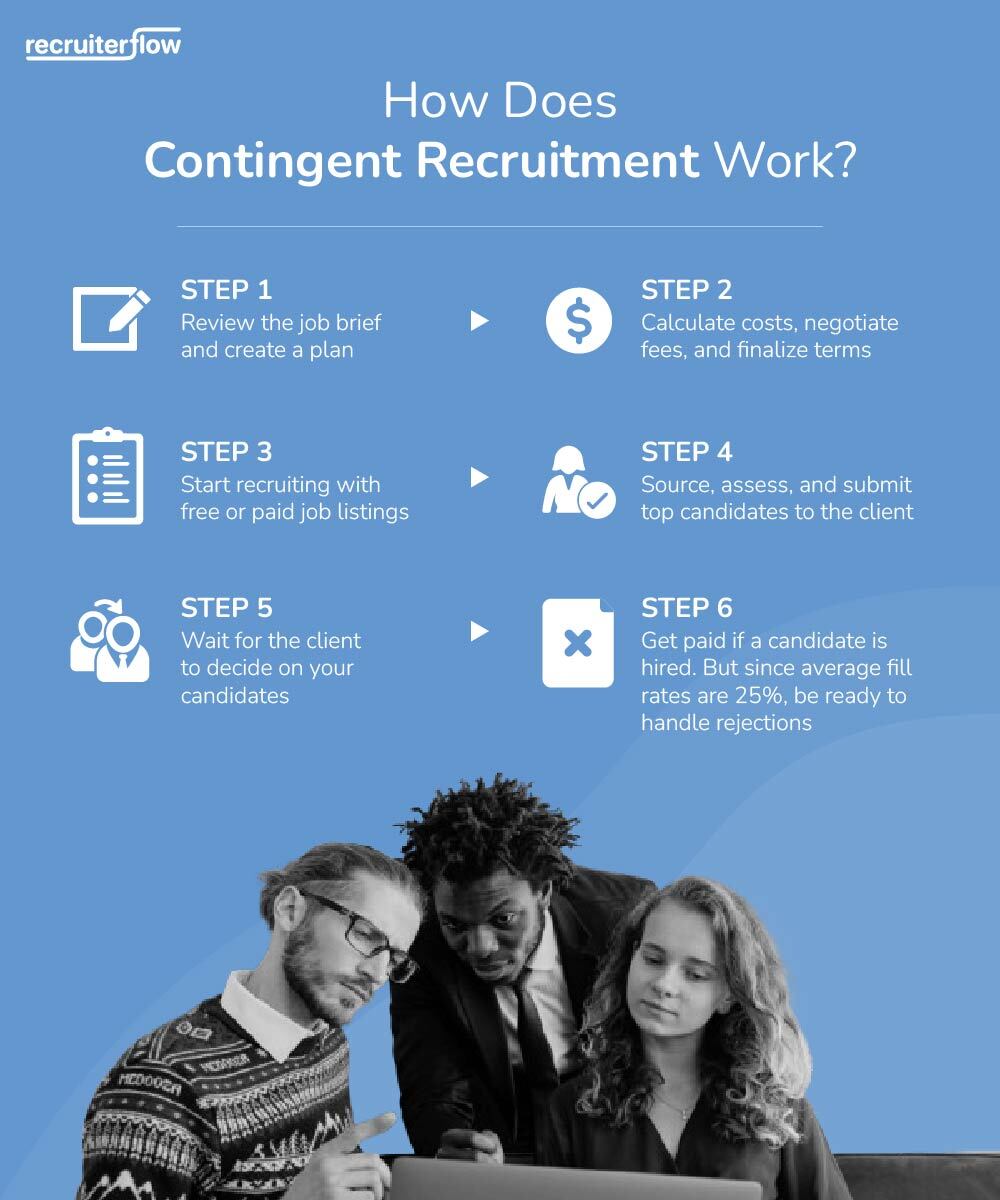
Benefits of contingent recruitment
Running a contingency recruiting comes with its fair share of benefits:
- BD growth potential: The ‘pay on placement’ model makes attracting clients easier, giving you access to a larger pool of clients to work with.
- Volume of clients: You can work with multiple clients simultaneously, increasing your revenue.
- Internal hiring flexibility: This model gives you flexibility in scaling your internal team. You can increase your workforce during seasonal hirings or unplanned new projects.
- More freedom: You can choose the clients or roles you want to work on, without making any commitments.
- Recruiters’ performance: Success-based incentives can make your recruiters go the extra mile, yielding better quality outputs and increasing client trust and long-term collaboration.
How to scale your contingent recruitment business
Scaling a contingent recruitment business is tough. You must balance growth while maintaining efficiency, profitability, and talent quality. All of this, is happening, in a highly competitive market with inconsistent cashflows.
So, how do you scale? Let’s start with business development.
Business development in contingency recruitment
Scaling your business demands a strategic focus. Here are four essential pillars to focus on, that’ll help you in your journey from 1 to 10.
Niche down
This allows you to build deep expertise in a specific industry or skillset while giving you access to a strong candidate pool. It differentiates your agency from the competition and makes you the go-to recruiter in that niche.
These platforms allow you to connect to potential clients and candidates. It’s a great place to showcase your expertise, share past case studies, and build relationships at scale. Ultimately, all of this helps you generate more inbound leads.
Build your brand:
A strong brand establishes credibility and trust in a crowded market. As you scale, this helps you attract more clients, reducing the need for constant outbound efforts. It also helps you position yourself as a premium service provider and command higher fees.
Focus on client retention
Retaining existing clients is more cost-effective than acquiring new ones. This ensures repeat business and steady revenue, which is vital for sustainable growth. A good retention rate to aim for is 80%.
How your tech stack can help you scale your recruitment business
As you scale your contingency recruiting business, managing multiple open positions and clients can get overwhelming. In this phase, it’s crucial to reassess your tech stack and address any inefficiencies.
- Identify the challenges: Despite the availability of automation and AI, you might still have processes that rely heavily on manual input. To streamline your workflow, make sure that all recruiting tools are fully integrated with your existing processes. Review your ATS, CRM platform, scheduling tools, communication tools, assessment platforms, and job boards for compatibility. Identifying these bottlenecks will help you figure out if you need an upgrade on your current ATS or CRM.
For instance, Recruiterflow offers an open API, enabling you to seamlessly integrate other platforms you use, making sure your entire system works cohesively. Additionally, with a user-friendly interface, thorough training, and responsive support, it ensures a strong adoption rate across your team - Train the team: Implementing new technologies, especially AI and automation, can be a big shift for your team. There will be some resistance or frustration as they navigate through the learning curve. However, with proper training and a little patience, AI will eventually simplify their workflow and improve overall productivity.
Another important point to note is AI or automation can’t replace the human touch, so learning how to leverage it the right way is very crucial. To learn more about how automation and AI can help you scale your recruitment business watch our on-demand webinar on AI and automation. - Monitor and Optimize: Spotting the bottlenecks and making upgrades is just the beginning– constant monitoring and optimization are crucial for long-term success. Evaluate whether your team is using the right tools and maximizing the available resources. Make adjustments wherever you identify loopholes.
Recruitment strategies to scale your recruitment business
Once you’ve organized your tech stack you’re ready to shift your focus towards the candidate side, beginning with recruitment strategies. A well-rounded recruitment strategy not only helps attract top talent but also ensures long-term success in placement and retention. Here’s an approach that’ll help you build a strong talent pool and enhance the candidate experience while leveraging your latest tech stack.
Step 1: Establish your brand presence.
Step 2: Ditch age-old job descriptions and adopt a more targeted approach.
Step 3: Build your talent pipeline.
Step 4: Keep track of your recruiting metrics.
Step 5: Focus on creating a smooth candidate experience.
Step 6: Regularly communicate with the hiring manager.
Step 7: Leverage data-driven recruiting.
Step 8: Humanize your hiring process.
Step 9: Focus on creating an overall innovative recruitment campaign.
[Want a more detailed look into the best recruitment strategies? Read all about it in our blog.]
Build a team with a scaling mindset
A well-known tactic in the sales world is to hire in pairs. And that’s shown great results for Brianna Rooney, CEO of Talentperch. Brianna adopted this approach as she felt hiring in pairs, helps the employees bring out the best in each other. And on the downside, if one of them fails, she doesn’t have to begin the whole hiring process from scratch.
But apart from this strategy, the most important thing when it comes to hiring during a scaling phase– the mindset of the ones you hire. When your hustle mode is on, you don’t want to bring in someone who’s got a laid-back approach. You need someone with the same attitude and drive.
Next, you need to look into your budget as well. As your team size grows, your cost rises. Growing too fast can put a lot of pressure on your finances. There have been instances where founders are worried a couple of months in drought they’ll have to dip into personal savings to make payments. So, this is a good time to revisit your hiring plan and if you don’t have one yet, you better get on it right away. Learn how to create a strategic recruitment plan (with free customizable templates) in our latest blog.
Another key area you must focus on as you grow in size– adopt the right leadership style. Turning your heavy hitters into leaders would put a strain on your business as their valuable time is going into managing the team. You need to find someone who is good at managing but also can be a great source of mentor for the reporting team.
But managing a team or a large pool of clients isn’t the only challenge that you’ll face when you’re scaling. Let’s look at what challenges lie ahead in contingency recruiting and how to tackle them.
Challenges in scaling a contingency recruitment
- Cash Flow Management:
Running a contingency recruitment business requires careful management of cash flow. You need to cover operational expenses like office space, salaries, and legal fees. On top of that, investing in essential AI recruiting tools and marketing and branding costs puts a heavy toll on the finances.
And with the payments delayed till a candidate is placed and starts, your budget can be stretched thin, especially when you’re scaling up.
- Client and Candidate Management:
Since your business heavily relies on placing candidates, as you scale, you might be under the impression that more clients are the answer. But the more clients you have, the more open positions, and to fill that you’ll need more recruiters. But all of this can create a scenario where you tend to become ‘fake busy.’
Also, read our blog on How to Hire a Recruiter for recruiting and staffing agencies
In our conversation with Brianna, she shared about the challenges she faced when at a point in time, she managed 50 clients, with 3 to 5 jobs to fill per client. This creates management issues and productivity issues and can compromise the candidate and client quality, too. [Catch the whole conversation and get your hands on the secrets to scaling a contingency recruiting business.]
So, to sum it up, effective systems and processes need to be in place and like we discussed earlier, staying niche is your best friend in this chaos.
- Recruiter Performance and Training:
Due to the high-pressure, results-driven nature of contingency recruiting, retaining recruiters is a big challenge. A high turnover rate can prove costly, as frequent staff changes disrupt the workflow, leading to a loss in productivity.
If you adopt a fixed compensation model, then balancing the salaries is challenging. On the other hand, if you opt for commission-based compensation, the compensation is tied to successful placements, putting pressure on the recruiters.
- Operational Complexity:
As your business scales, the complexity of your recruiting activities increases. Keeping track of KPIs can become challenging. This puts immense pressure on your day-to-day operations. Use Saas reporting tools and dashboards to get a bird eye’s view into your key metrics any time you want.
With Recruiterflow, you have access to in-built reporting features that give you insights into your recruiting journey as well as how your team is performing. You can also use the recipes to automate repetitive tasks.
Another thing that gets complex as you scale is management and supervision. Taking away your recruiters from their main activities to focus on this, creates inefficiencies. That’s why having a dedicated RecOps team to handle the operational complexities can help you and your recruiters get back to what they love and do best.
[Want to know more about RecOps hiring? Read our blog, from why you need RecOps, to the strategies, to actionable tips, we’ve covered it all.]
Retained vs contingent
If you’re starting a recruitment business and finding your way around the industry, contingency recruiting isn’t a choice– it’s your only option. Put yourself in the client’s shoes, ‘Will you trust and pay someone upfront– without vetting their past track record?’
The contingency model allows you to establish and build a relationship with the clients and candidates. It also gives you the freedom to make mistakes and not pay too dearly for them. There’s no pressure on you to deliver. Let’s have a detailed look at the differences between the two models.
| Contingent Recruitment | Retained Recruitment |
| It’s a ‘pay for results’ model, as in clients pay when the agency fills the position. | The agency is paid an upfront fee (usually the entire fees are paid out in three stages; when they sign the contract, post-offer acceptance, and post-joining.) |
| Better for hiring junior roles. | Better for hiring executive-level roles |
| No mutually exclusive agreement or contractual obligation. | Contractually obligated to the terms and conditions outlined in the retained executive search process. |
| Focus on KPIs, targets, and volume of CVs sent. | Focus on ensuring a thorough candidate search to deliver the best candidate. |
| More risky business model due to uncertainty | Comparatively less risky as their certain level of trust is established in a retainer business model. |
Running and scaling contingent recruitment presents both challenges and rewards. Your success hinges on tackling obstacles directly, and investing in the right technology and people, while constantly refining your processes. With all of this in place, you can create a scalable, sustainable, and profitable recruitment that excels in today’s fast-paced market.
Also, check out our complete 2025 guide on Contract Staffing.
Some important FAQs
- What’s a good fill rate for a contingency-only business model?
A. Ideally, you should aim for 6-36 placements in a year. - What’s a good target for time to fill a role?
A. The time to fill, from job search to offer acceptance, should ideally be within 5 weeks. - What’s the commission structure for a recruiter in a contingent-only business?
A. A good margin would be 20-25% of the fee charged, on both sides, candidate and client. - What’s a good client retention rate?
A. A good client retention rate to aim for is 80%. - What should be the ideal revenue contribution from the top 20?
A. Ideally, top clients should contribute 12-25% of revenue. A high concentration from a single client can be risky.
Recruitment
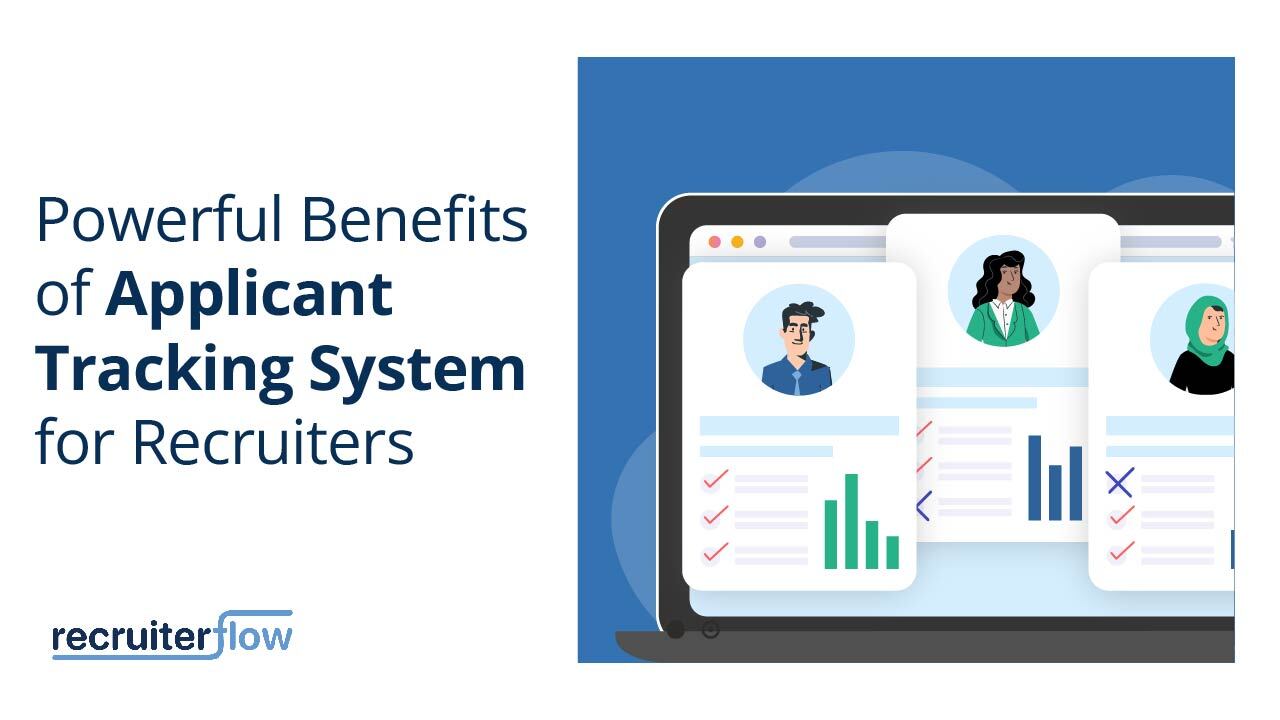
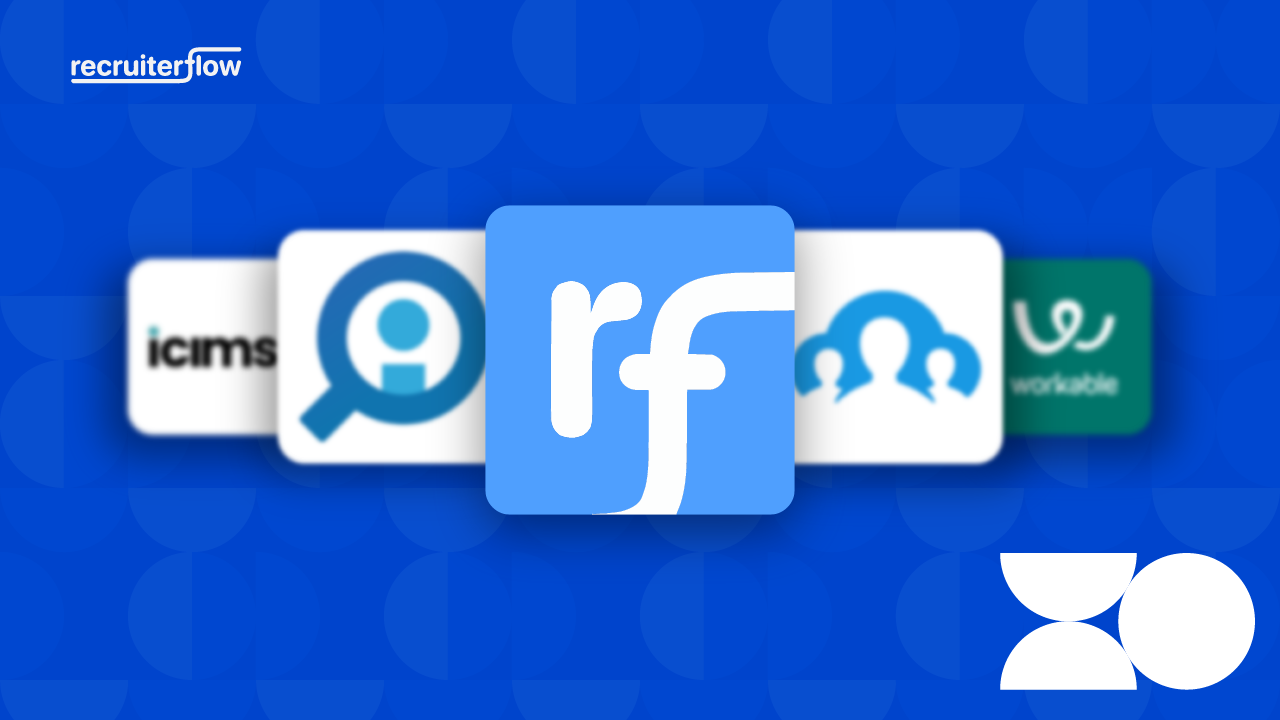

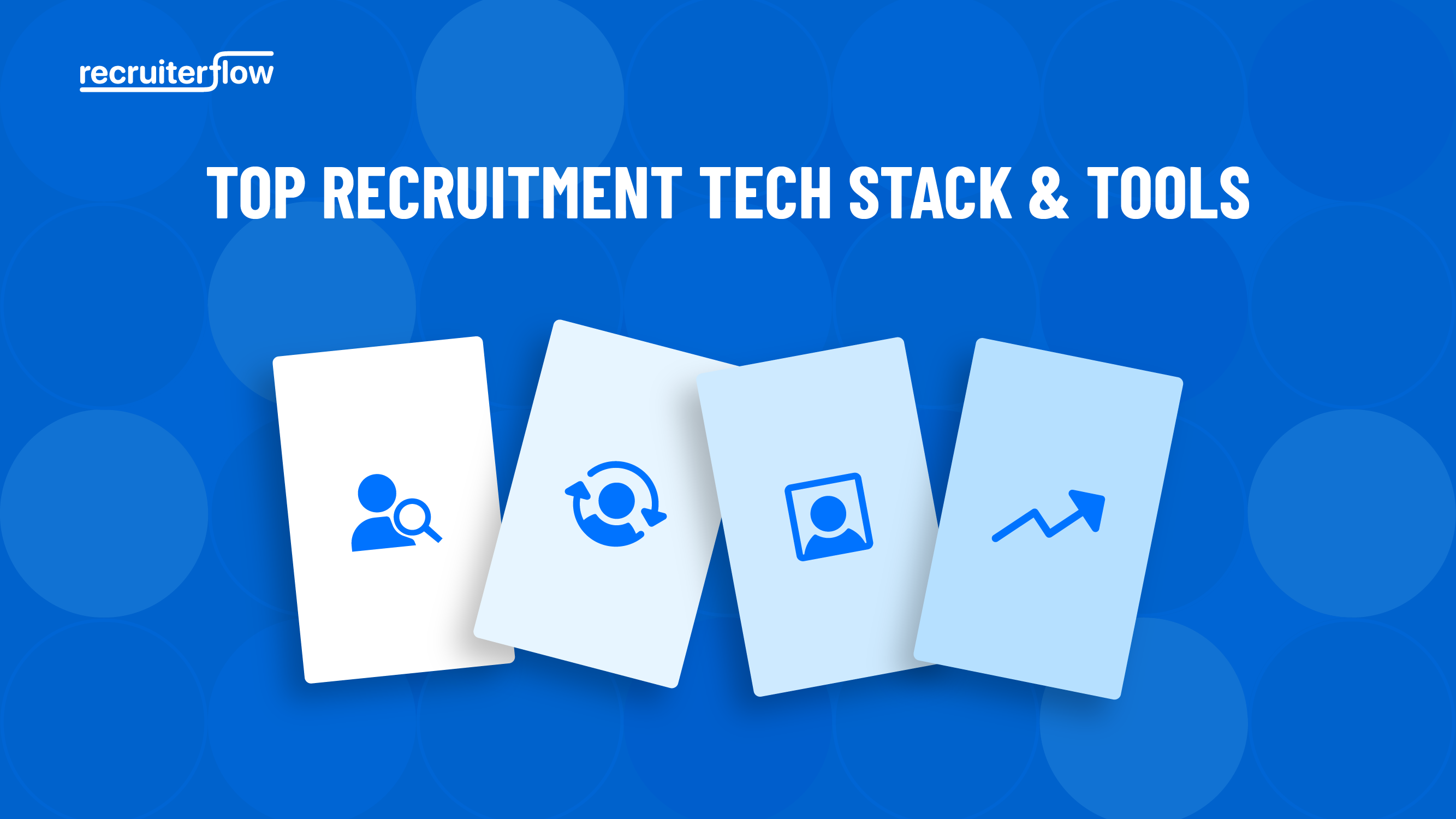

Abhishek Sharma